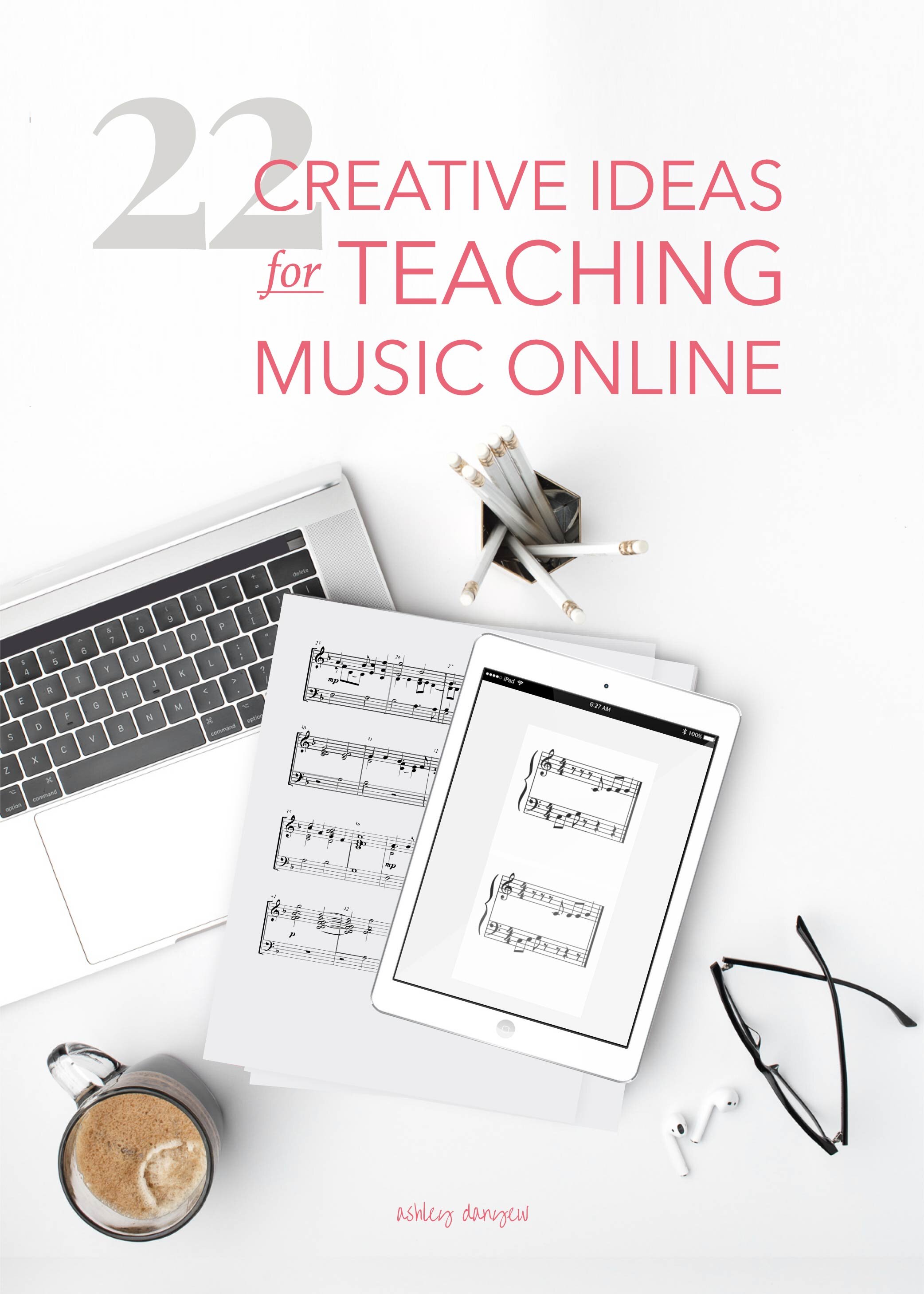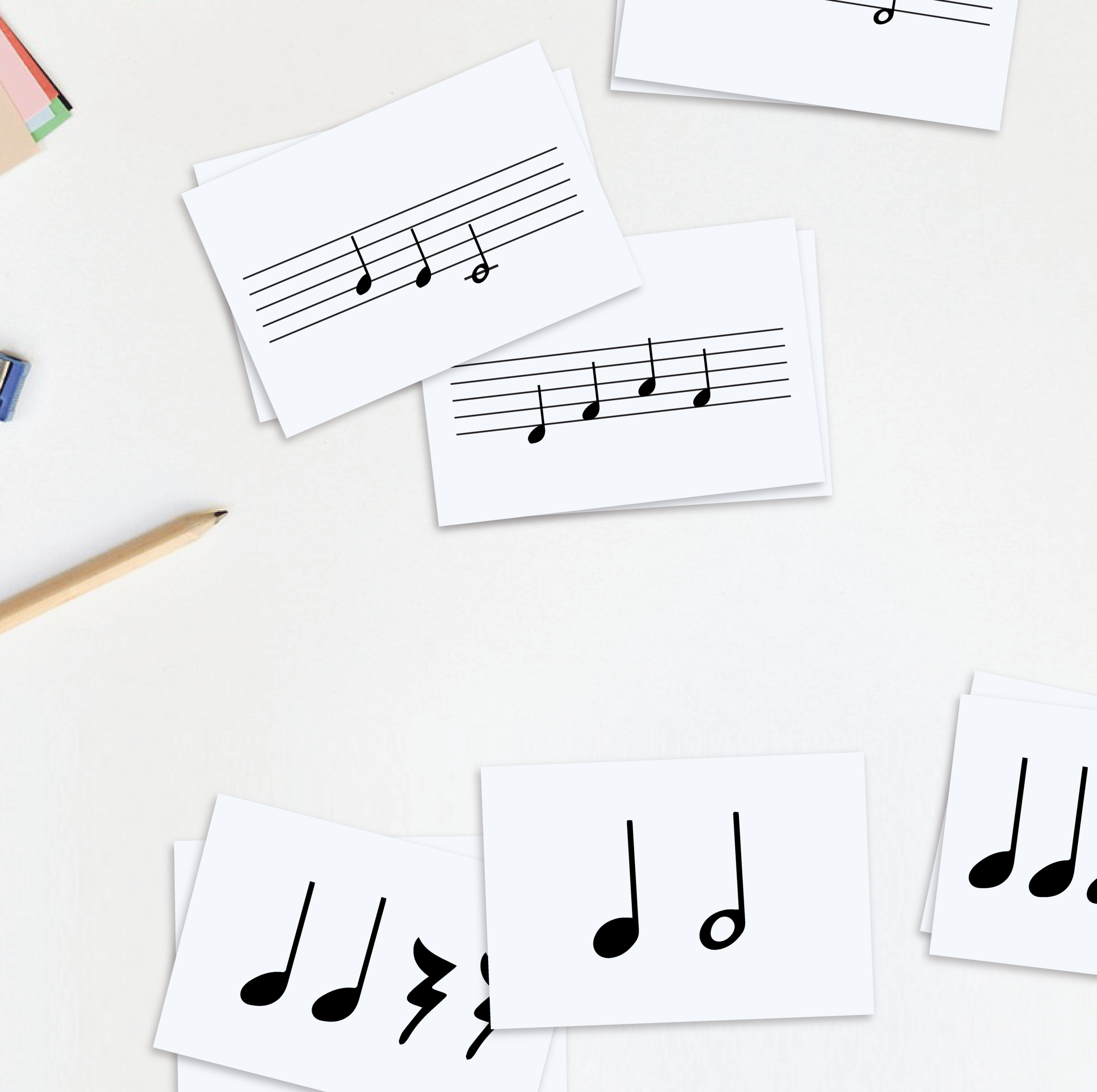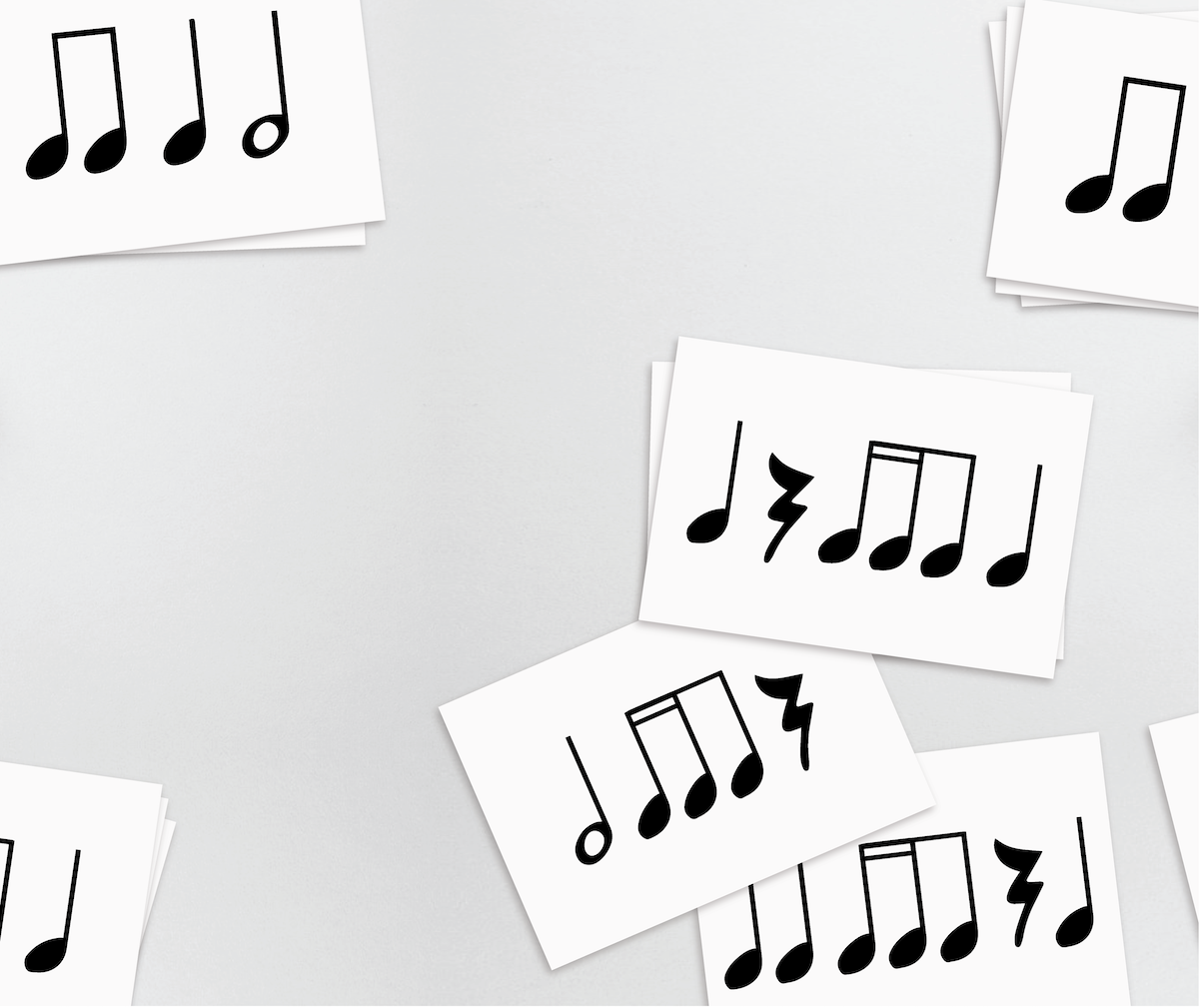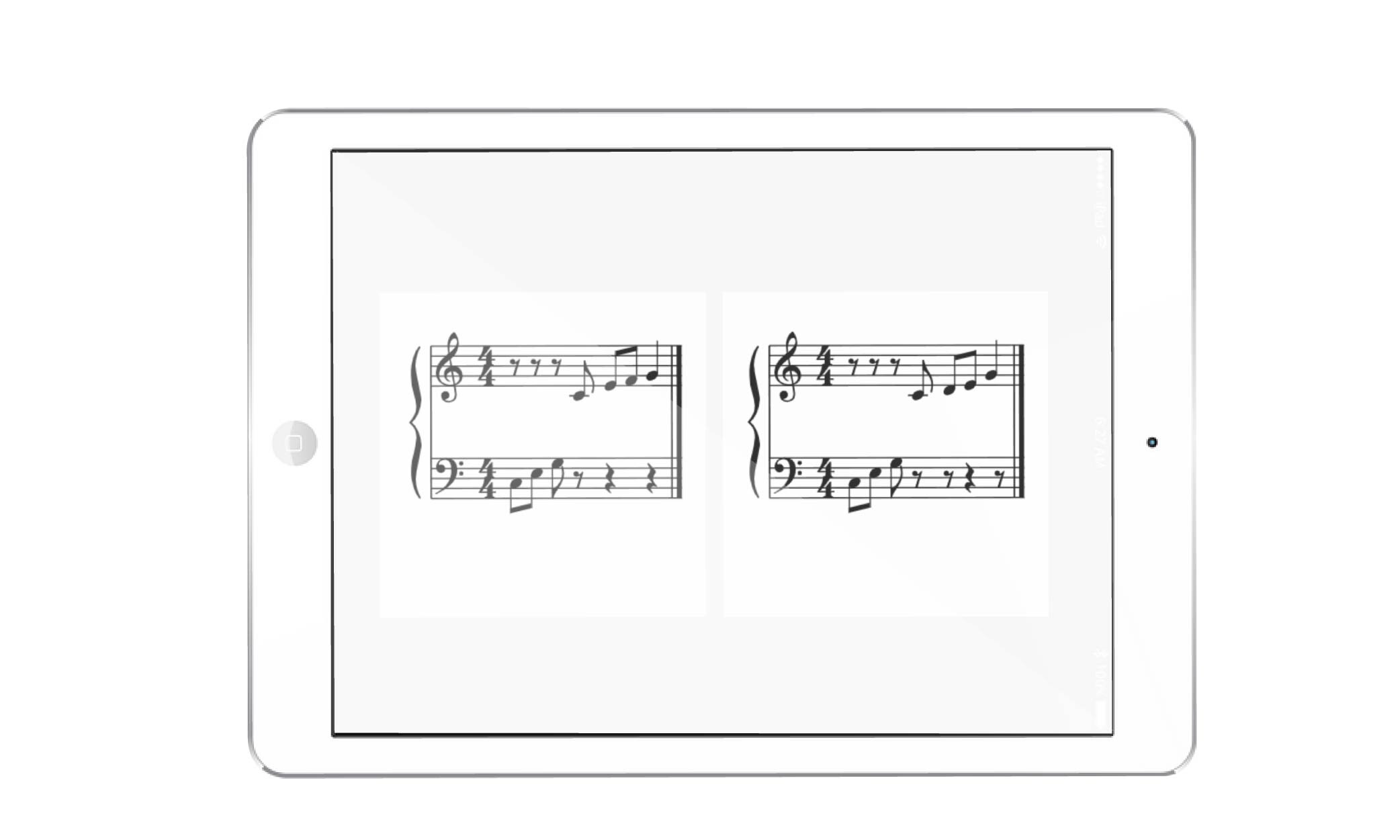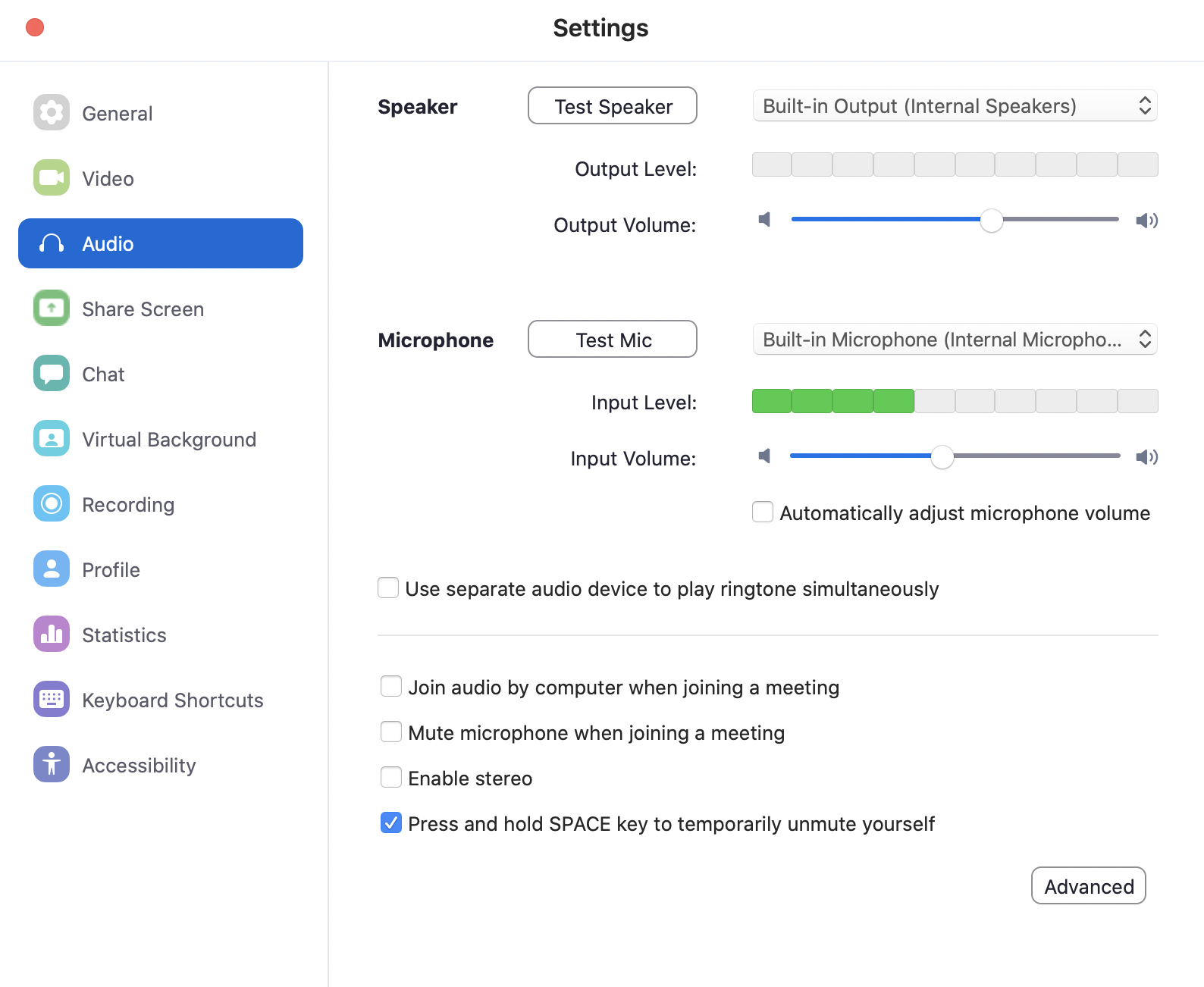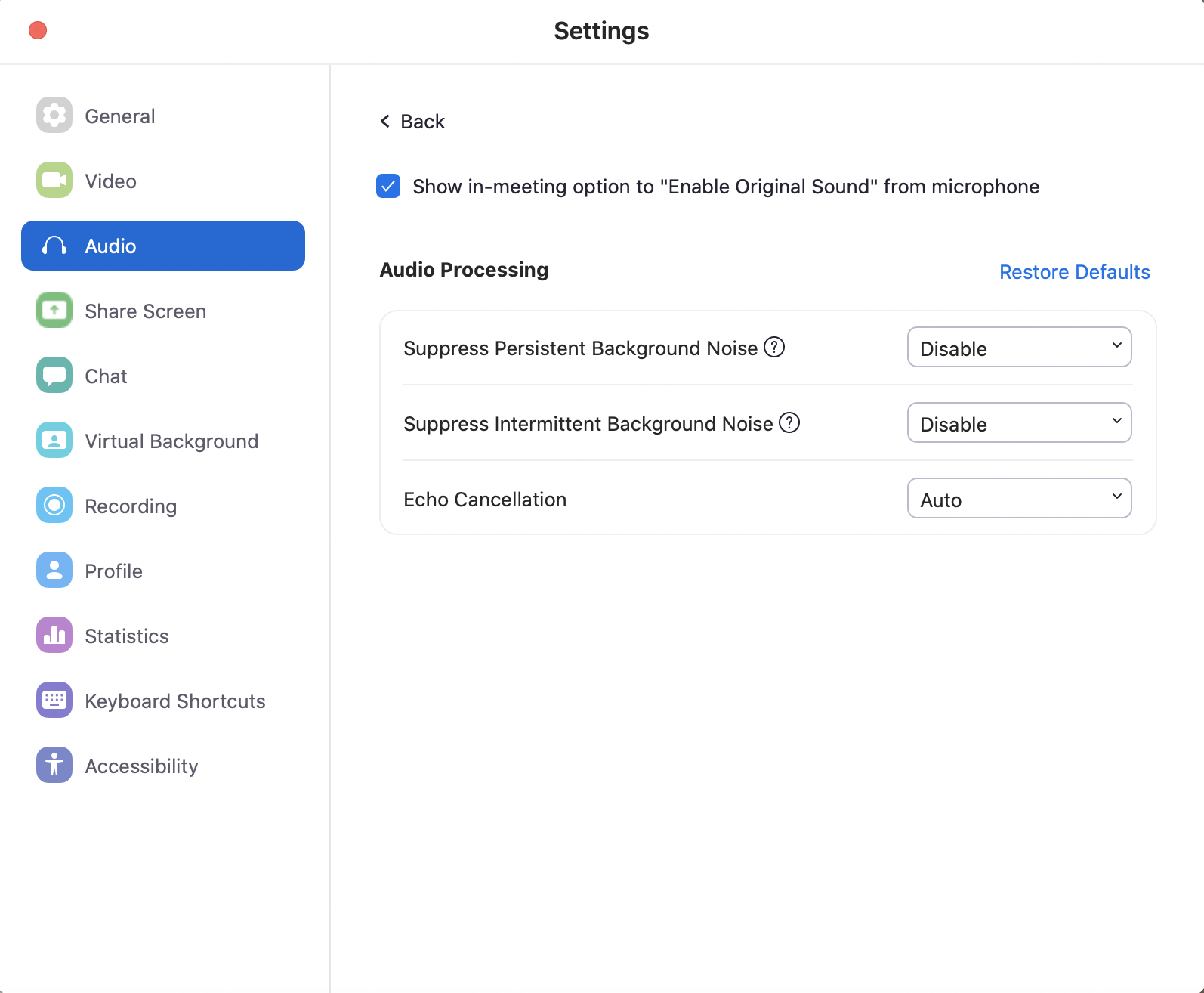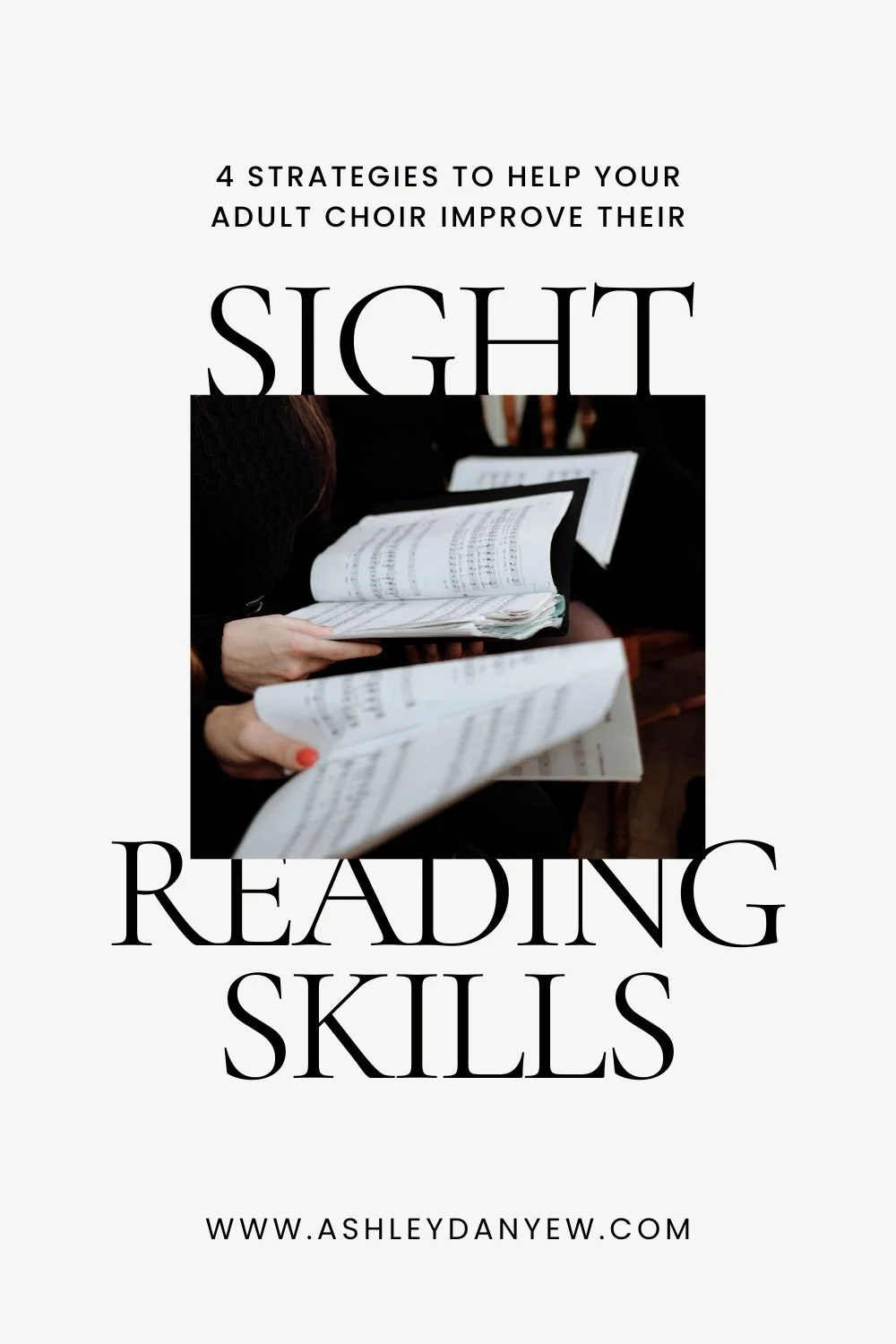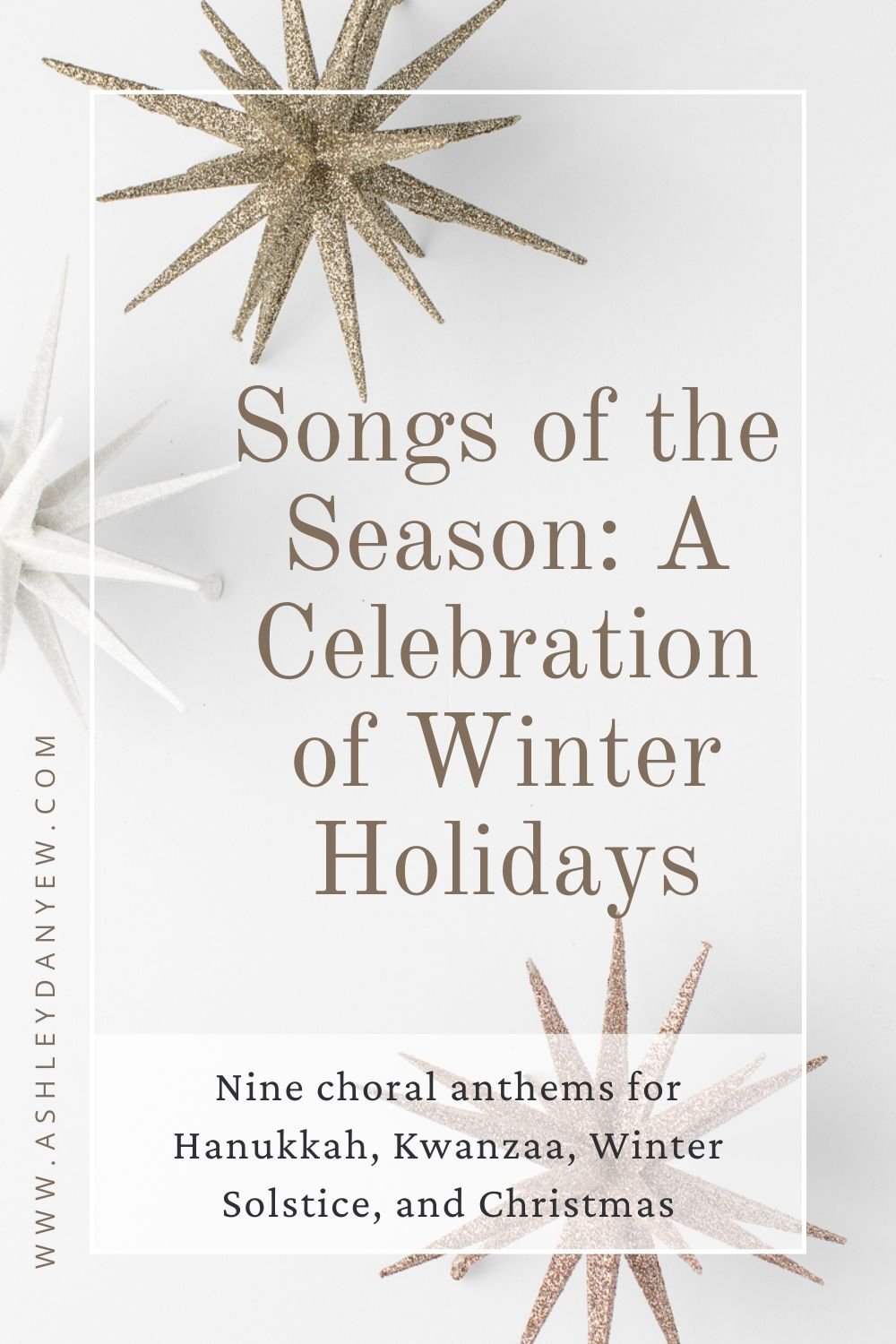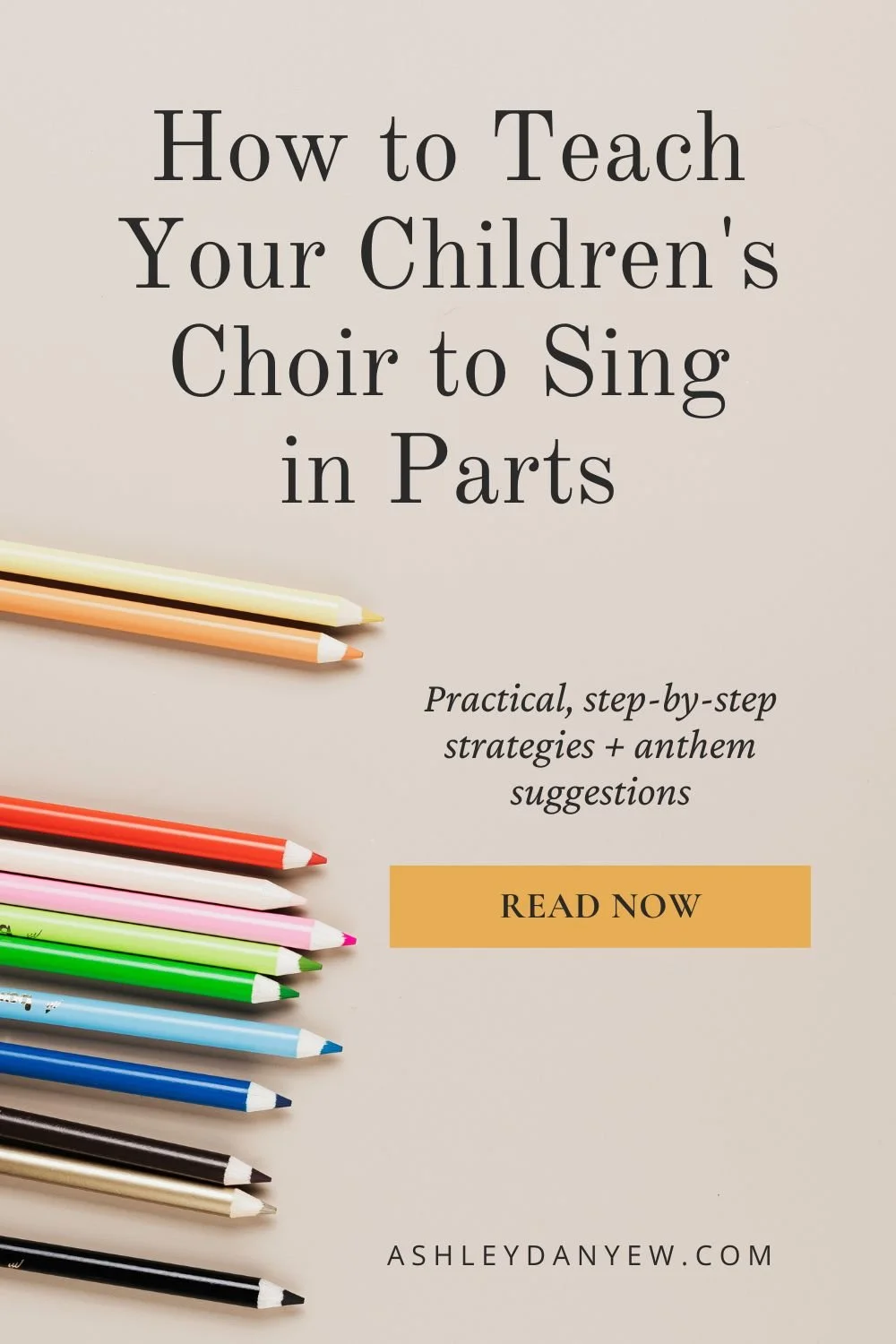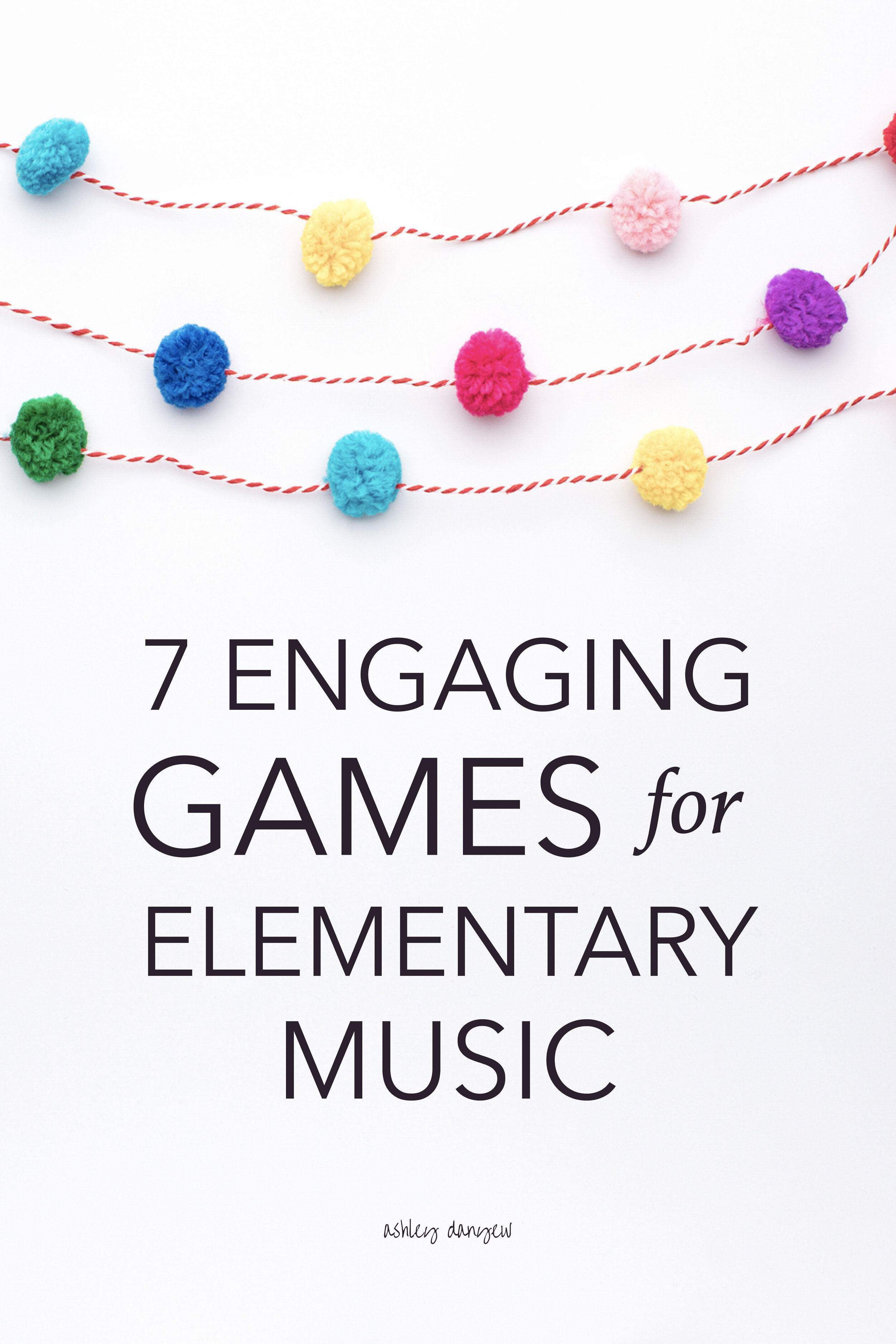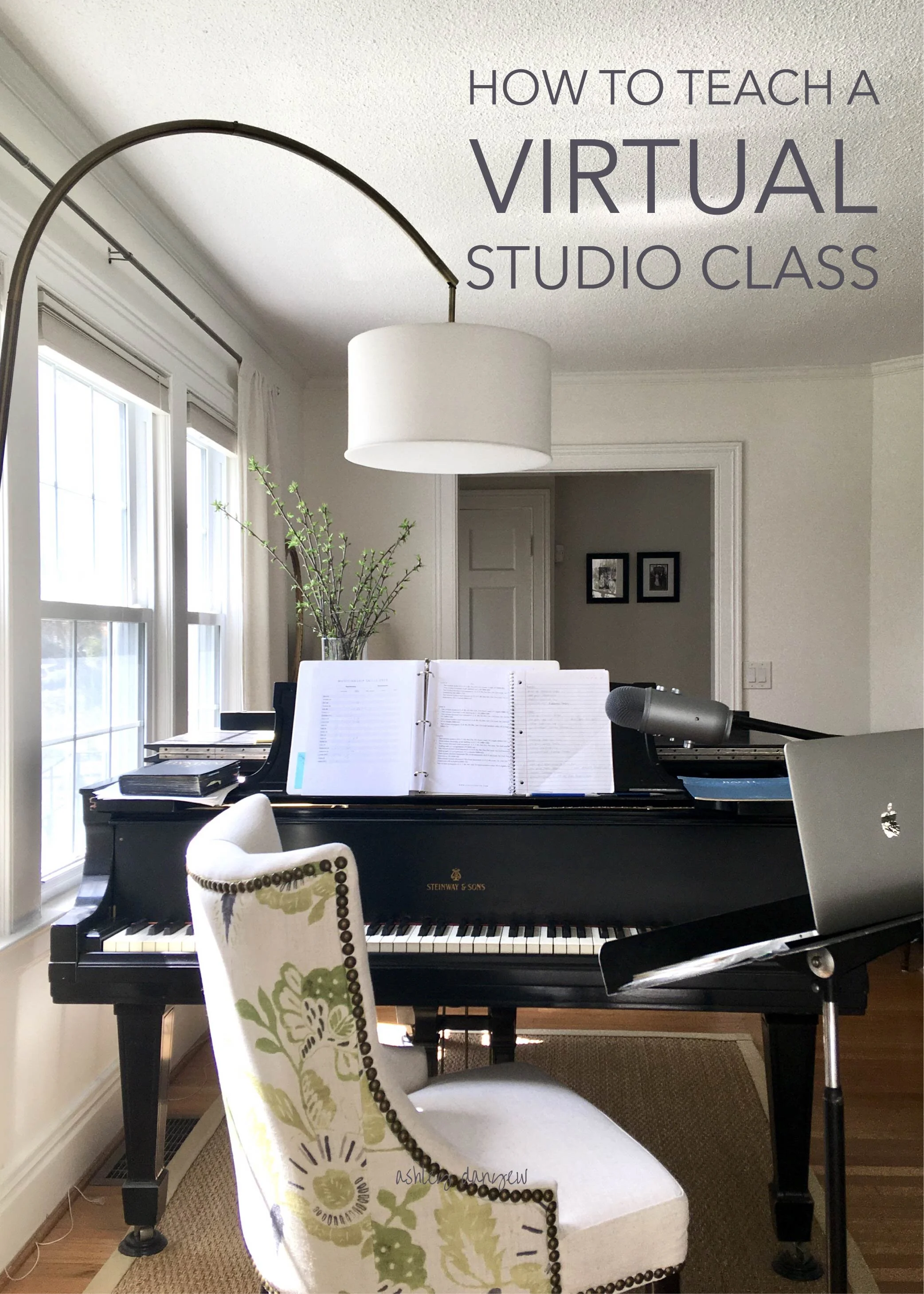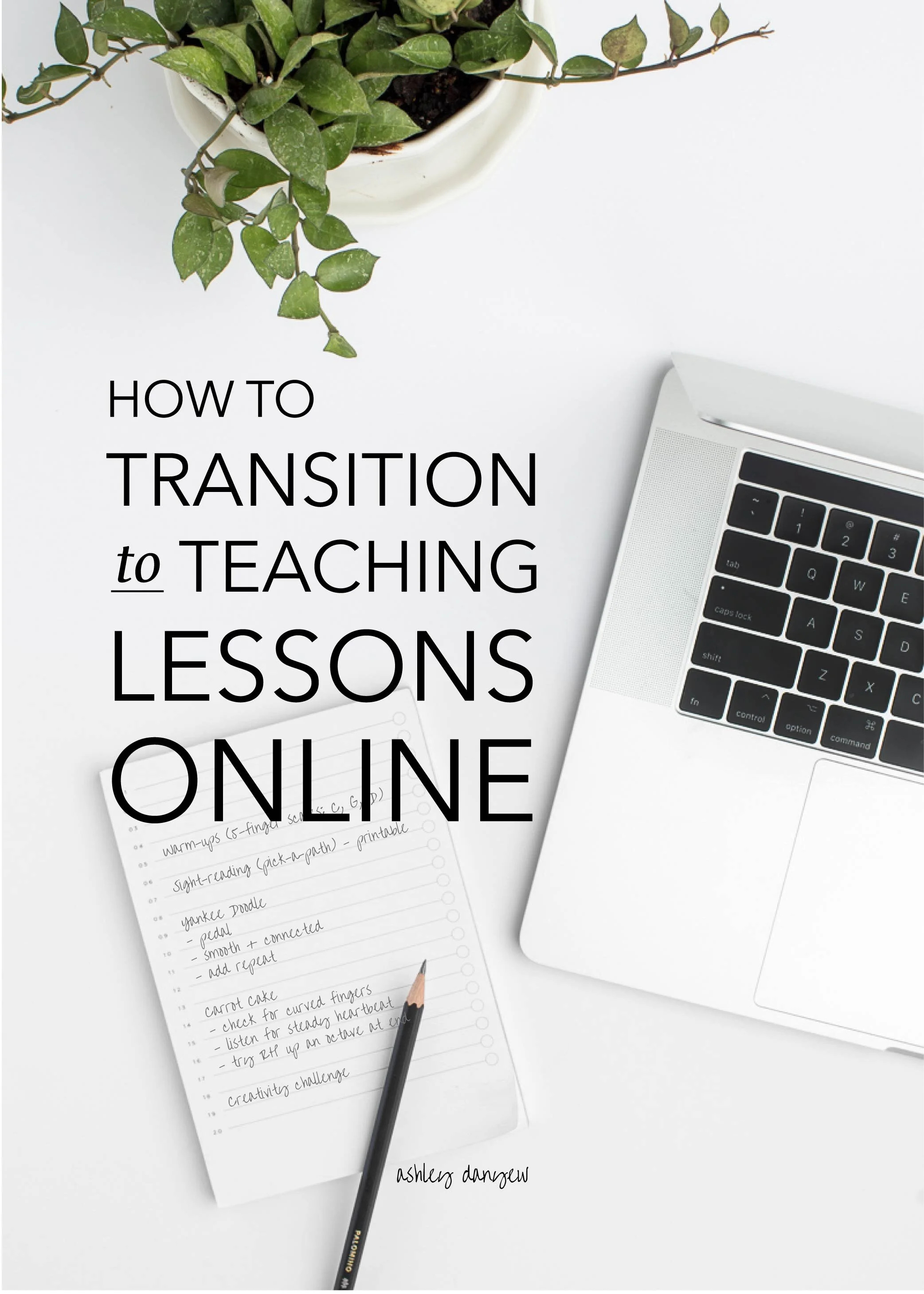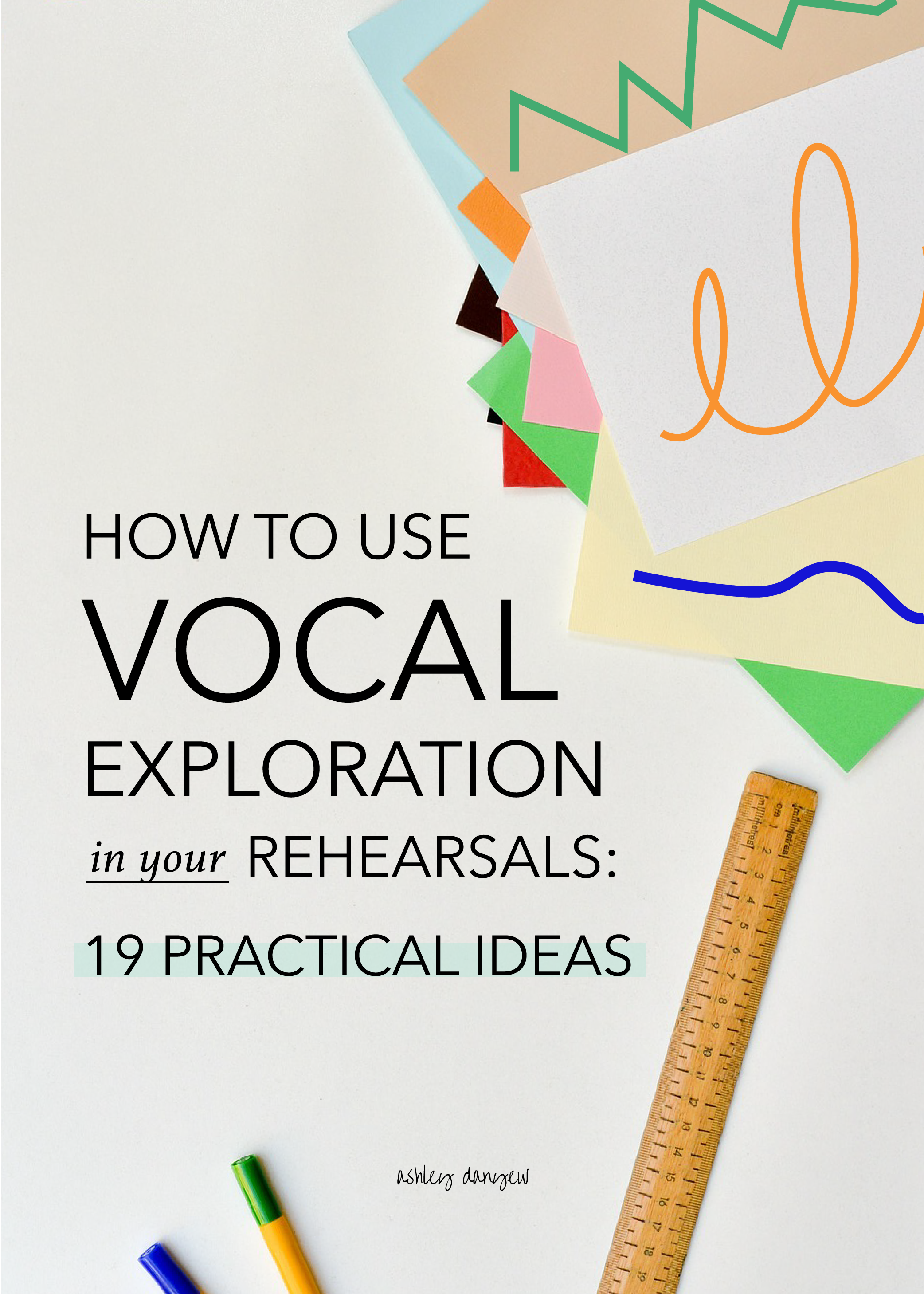Like many of you, I’ve been thinking a lot about how to teach music creatively online these past few weeks.
What tools work best to facilitate connection, dialogue, and musical experience?
What strategies lend themselves best to online teaching?
What assignments will foster music-learning during this time?
As many of us are navigating this new territory of learning how to teach online due to the COVID-19 pandemic, I thought I’d put together a master list of ideas for teaching in a variety of settings: church music, community teaching, and K-12 music.
I’m also including a list of tech tools that I’m using personally, have used in the past, or have heard recommended from other music teachers in the field.
Whether you’re brand-new to teaching online and are looking for a place to start, or you’ve been teaching online but are looking for some fresh inspiration, I hope you find a new idea or two that you can incorporate in the next few weeks and that will benefit you and your students.
*Disclosure: I get commissions for purchases made through links in this post.
Teaching Church Music Online
Whether you work with children, youth, or adults, here are some innovative ideas for staying connected, inspiring each other, and continuing to make music during this unprecedented time:
Children’s Choir
Host a virtual at-home choir rehearsal via a video chat tool like Zoom or Facebook Live, or pre-record a rehearsal to send out via Google Drive or Dropbox later. Include a hello song, songs with simple motions, a movement activity, a simple rhythm activity, call-and-response songs or patterns, and a prayer at the end. If you use Zoom, use the share your screen feature to include visuals and musical examples. You can annotate these, too!
Here are a few resources that might help:
Free Rhythm Pattern Card Set: 16 rhythm patterns cards in 4/4 time.
Tonal & Rhythm Pattern Card Set: Younger Elementary: two sets of printable tonal pattern cards (major and minor, 44 cards each) and two sets of printable rhythm pattern cards (4/4 and 3/4 time, 32 cards each).
Tonal & Rhythm Pattern Card Set: Older Elementary: two sets of printable tonal pattern cards (major and minor, 44 cards each) and four sets of printable rhythm pattern cards (4/4 and 3/4 time, 32 cards each).
Send home a devotional from a book like Five-Minute Bible Devotions for Children or Grace for the Moment: 365 Devotions for Kids for families to read together plus a video recording of a song or hymn.
Use a tool like these virtual Boomwackers to help children experiment with tonal patterns, ostinati, and composition. Send home a video demonstration (using actual colored handbells or Boomwhackers or a screenshare recording using this virtual tool) and a copy of the music from a digital resource like the Children’s Handbell Collection.
Create Google slides with song visuals, rhythm patterns, and ear-training activities for children to do on their own.
Send audio recordings of your choir songs for children to practice at home with their families. Note: If you use the Growing in Grace music curriculum, you can purchase a license to duplicate and share copies of the audio files for $0.39/piece.
Put together a packet of music and activities for families to pick up, like the Hymns and Bible Songs activity packs. Each one includes a CD with 20 hymns in a variety of styles, an activity book with coloring and sticker pages, games, dot-to-dot, and mazes, 4 crayons, and 2 sticker sheets. Purchase a 10-pack to share with a group of children or purchase one individually.
Youth & Adult Choirs
Host a Zoom fellowship gathering. Spend some time catching up and checking in on everyone, then sing a song or two together by having everyone mute themselves and sing along at home. Play a recording (or piano) on your end and conduct so everyone can follow you. Share your screen to show a piece of music, hymn, or sight-reading example.
Send home music to practice at home with rehearsal tracks. Consider hosting live virtual sectionals and having everyone practice their part at home (muted).
Send home a challenge for your choir members to make and share music with others during this time. Sing or play a favorite hymn, sing a verse of a favorite anthem, sing a show tune or a folk song or a lullaby. Encourage them to record a video at home (by themselves or with family members) and share with friends and family via text, the Marco Polo app, social media, or email.
Teaching Community Music Online
If you teach in a community setting, whether in a community music school, an after-school music program, or a private studio, here are a few creative approaches to teaching and fostering music learning during this time:
Early Childhood
Share links to free online music education classes. Here are two to consider:
Musik at Home is offering free unlimited access to their Family Music for Mixed Ages classes (intended for ages 1-5) through April 3, 2020.
Jam with Jamie offers free daily virtual jam sessions for children ages 0-8.
Create a music exploration activity (like a scavenger hunt) for your students. Have them sing their favorite song for their mom or dad (or relative via FaceTime), find something around the house they can use as an instrument, dance to a song on the radio, listen to a bird sing, etc.
Related post: How to Teach a Preschool Choir
Private Lessons
Teach live video sessions using Zoom, Skype, or FaceTime.
Give asynchronous assignments for students to complete on their own during the week. Record feedback and demonstrations in place of a written assignment sheet.
Offer pre-recorded lesson kits with a warm-up exercise, a rhythm game, a playback/clapback activity, an introduction to a new piece, a recording to practice with, etc. For young piano students, I recommend the Wunderkeys Primer series. Each chapter includes a story, a new musical concept, practice exercises, a few short pieces, and a game or two that students can play at home.
Give rhythm and sight-reading assignments through Sight-Reading Factory (free student accounts through the end of the school year for any school with closure).
Share your screen using Zoom and make annotations on a PDF copy of the music. Use different colors to mark intervals, dynamics, form, repeated patterns, etc. For more on using color, see this post: How to Use Color to Teach Music Literacy.
Use virtual music theory tools from muted.io to review major/minor scales or the Circle of 5ths.
Send home a challenge for your students to make and share music with others during this time. Encourage them to record their own videos at home (by themselves or with family members) and share with friends and family via text, the Marco Polo app, social media, or email.
Related post: How to Transition to Teaching Lessons Online (Due to COVID-19)
Here are a few resources that might help:
Free Major & Minor Scale Fingering Charts: a streamlined, 2-page printable with scale fingerings for both hands in all major and minor keys.
Rhythm Pattern Card Set: six rhythm pattern card sets featuring 192 different patterns made up of quarter notes, half notes, eighth notes, sixteenth notes, and quarter rests in 4/4 and 3/4 time.
Group Classes
Email games or worksheets in advance and play them live. Here’s a list of resources from Teach Piano Today that I’m using with my students.
Give asynchronous assignments for students to complete on their own. For instance, have each student record a performance for the group, then review and give comments to a few of their peers.
Send a link to these paper keyboards and have students practice scales or simple pieces together via Zoom. Encourage them to sing along or sing the finger numbers or solfege.
Create Google slides with interval flashcards, note-naming flashcards, rhythm patterns, and ear-training activities for students to do together (share your screen using Zoom).
Free Resource
Ready-to-use games and activities for your online group classes.
Inside, you’ll find seven online games and activities to foster aural skills and awareness, reinforce theory and technique, and promote musical development for students of all ages.
Teaching K-12 Music Onliine
Are you a K-12 music educator? Here are some creative teaching ideas for general music at the elementary level, as well as large ensembles in middle and high school:
Elementary Music
Use Seesaw to create and share online resources, games, songs, and activities. Victoria Boler just put together a great resource: a complete 1st-grade virtual music lesson using Seesaw and Google Classroom.
Use a tool like these virtual Boomwackers to help children experiment with tonal patterns, ostinati, and composition. Have them record their work using a program like QuickTime or Loom (screenshare recordings) or Zoom (share my screen).
Create a virtual music classroom using Google Classroom. Organize content, upload assignments, and resources, and grade student work.
Host a virtual at-home music class (include a hello song, songs with simple motions, a movement activity, a simple rhythm activity, call-and-response songs or patterns, etc.). Share via Facebook, YouTube, or Google Classroom.
Create Google slides with song visuals, rhythm patterns, and ear-training activities for students to do on their own (upload to Seesaw or Google Classroom).
Send home a challenge for your students to make and share music with others during this time. Encourage them to record their own videos at home (by themselves or with family members) and share with friends and family via text, the Marco Polo app, social media, or email.
Choir, Band & Orchestra
For instrumentalists, assign students duets, trios, and quartets using a book like Accent on Ensembles, Book 1. Have them work on their parts individually, then submit recordings (playing along with a recording through headphones to ensure consistent tuning and tempo). Assemble individual recordings into one video using a video-editing tool like Logic Pro X or the free app, Acapella.
Send home music to practice at home with rehearsal tracks (or have them input their part into Flat.io and export an audio file that they can practice with). Have them submit recording assessments each week. Consider hosting live virtual sectionals and having students take turns playing for each other.
Use Google Chrome Music Lab to teach about harmony and the Circle of 5ths and have students create their own chord progressions and submit.
Give scale, sight-reading, and rhythmic-reading assignments in Google Classroom or through Sight-Reading Factory (free student accounts through the end of the school year for any school with closure).
Tech Tools for Online Teaching:
Here’s a round-up of tech tools (most are free!) that are useful for online teaching at a variety of levels:
Video
FaceTime: Free video chat tool available on any iOS device with a forward-facing camera and any Mac computer with a FaceTime Camera.
Facebook Live, YouTube Live: Live-streaming through social media platforms.
Zoom: Free video chat software (40-minute limit for groups of three or more on the free Basic plan, waived right now for K-12 educators).
QuickTime: A free tool for making video, audio, or screenshare recordings.
Loom: A free tool for making video or screenshare recordings (with or without "talking head” - a cropped video of you talking down in the corner). Unlimited recording, a 50% discount on paid plans, and a 30-day free trial through 7/1/20. Also, if you’re an educator using Loom in a classroom setting, you can use Loom Pro for free, forever.
FlipGrid: Social media meets education. A short video exchange platform that’s free for educators.
Acapella: A multitrack tool for creating multi-frame music videos. Free in the App Store.
Google Hangouts: Free video chat for anyone in the U.S. or Canada with a Google account.
How to improve sound in Zoom
Login to your Zoom account on a computer or laptop. Look for these settings:
Audio Settings
Under Microphone, make sure “Automatically adjust microphone volume” is unchecked.
Audio Settings (Advanced)
Make sure “Show in-meeting option
to “Enable Original Sound” from microphone” is checked.
Under Audio Processing, set the first
two options to Disable. For Echo Cancellation, select Auto.
Audio
Discord: Free voice chat tool (try this for audio with Zoom for video for a virtual music-making experience).
QuickTime: A free tool for making video, audio, or screenshare recordings.
Blue Yeti Microphone: My all-time favorite microphone for recording directly into my MacBook. I use it for recording spoken directions as well as playing demonstrations.
Looking for more? Here are my best microphone recommendations for online teaching and music recording.
File Sharing
Google Drive: Free digital file-storage system (documents, spreadsheets, video files, images, audio files, forms, slides) for anyone with a Google account.
Your iPhone: Did you know you can scan documents in the Notes app? Open a new note, click the camera icon, and scan. Then, share the document via email or text.
Dropbox: Free digital file-storage system (documents, spreadsheets, video files, images, audio files, forms, slides).
Google Classroom: A free platform for organizing learning content, giving assignments, and tracking student work.
Seesaw: A free, interactive, cloud-based learning portfolio. Teachers create content and activities and students can take pictures, draw, and record videos of their work.
Music Notation
NoteFlight: An online, browser-based music-writing application. Free access to Noteflight Learn and all of the Noteflight Learn Content Libraries through June 30, 2020 for any schools or districts with closures.
Flat.io: A free cloud-based music notation software (look for the add-on in Google Slides and add snippets of music notation into your presentations). Flat for Education is free through the end of the school year.
Music-Learning
Virtual Boomwackers: a free web-based tool for playing (and hearing!) Boomwhacker sounds. Available in a diatonic or chromatic scale.
Musictheory.net: A free resource for creating note-naming drills, interval quizzes, and more.
Google Chrome Music Lab: A free web-based application for experimenting with rhythm and melody, pairing visual art with sound (Kandinsky), discovering arpeggios (a great exploration of harmony and the Circle of 5ths), and creating your own songs. In Song-Maker, students can save their work and share it using a unique link.
Musicfirst.com: A learning management system for K-12 music education. Free for any school with closure.
QuaverMusic: Music education curriculum resources for PreK-8th grade. Free access to general music activities (including free student access at home) for all impacted schools.
Sight-Reading Factory: An online sight-reading generator with customizable levels, musical components, note values, rests, etc. tailored to your students. Free student accounts through the end of the school year for any school with closure.
SmartMusic: Music-learning software for educators and students. Free through June 30th.
I’d love to hear from you:
What strategies are you using to teach online? What resources have been helpful to you and your students? Please share your ideas below in the comments!

